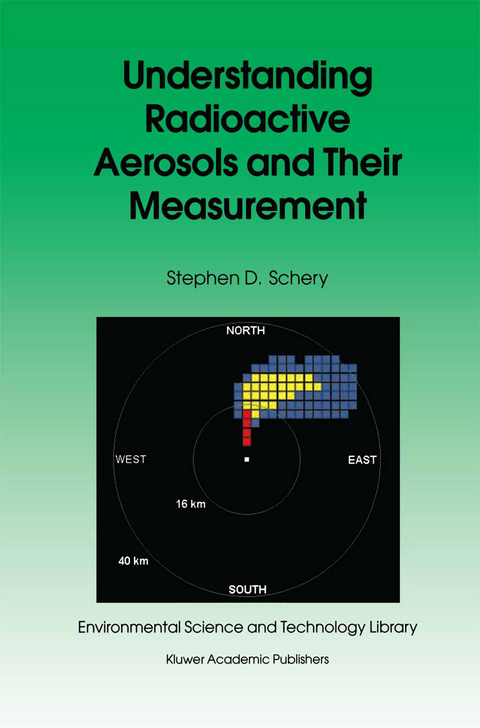
Understanding Radioactive Aerosols and Their Measurement
Kluwer Academic Publishers (Verlag)
9780792371762 (ISBN)
1 Radioactivity and Aerosols: An Introduction.- 1.1 Introduction.- 1.2 The importance of aerosols in environmental and atmospheric science.- 1.3 Nuclear radiation and decay.- 1.4 Size classification of aerosol particles.- 1.5 Emission sources and chemical properties of aerosol particles.- 1.6 Concentration of radionuclides in the environment.- 1.7 Radioactive aerosols and human health.- 1.8 Supplemental reading.- 1.9 Exercises and problems.- 2 Radioactivity and the Interaction of Nuclear Radiation with Matter.- 2.1 Introduction.- 2.2 Radioactive decay.- 2.3 The interaction of heavy charged particles with matter.- 2.4 The interaction of gamma radiation with matter.- 2.5 Supplemental reading.- 2.6 Exercises and problems.- 3 Measurement of Nuclear Radiation and Radioactivity.- 3.1 Introduction.- 3.2 Use of ionization and atomic excitation to detect nuclear radiation.- 3.3 The Geiger-Mueller detector.- 3.4 Alpha-particle measurement.- 3.5 Gamma-radiation measurement.- 3.6 Supplemental reading.- 3.7 Exercises and problems.- 4 Physical Behavior of Aerosol Particles.- 4.1 Introduction.- 4.2 Motion of aerosol particles relative to the surrounding air mass..- 4.3 Uniform motion and gravitational settling.- 4.4 Diffusion.- 4.5 Refinements to aerosol-particle motion.- 4.6 Recoil and radioactive decay.- 4.7 Aerosol particles in electric fields.- 4.8 Scattering of light by aerosol particles.- 4.9 Supplemental reading.- 4.10 Exercises and problems.- 5 Aerosol Measurement.- 5.1 Introduction.- 5.2 Common techniques of aerosol measurement.- 5.3 Inertial impaction.- 5.4 Filtration.- 5.5 Radioactive aerosols.- 5.6 Examples of radioactive-aerosol measurement.- 5.7 Supplemental reading.- 5.8 Exercises and problems.- 6 Radioactive Aerosols: Atmospheric Sources and Indoor Models.- 6.1 Introduction.- 6.2 Naturally-occurring radioactive aerosols.- 6.3 Anthropogenic radioactive aerosols.- 6.4 Indoor radioactivity.- 6.5 Supplemental reading.- 6.6 Exercises and problems.- 7 Radioactive Aerosols: Tracer Applications and Outdoor Transport.- 7.1 Introduction.- 7.2 Removal of aerosol particles from the atmosphere.- 7.3 Radioactive aerosols as atmospheric tracers.- 7.4 An outdoor box model.- 7.5 The Gaussian plume model.- 7.6 Improvements to the Gaussian plume model.- 7.7 The atmospheric diffusion equation.- 7.8 Supplemental reading.- 7.9 Exercises and problems.- Appendix A — Units of Measurement for Radioactivity and Aerosols.- Appendix B — Explanation of Symbols.- Cited References.
| Reihe/Serie | Environmental Science and Technology Library ; 19 |
|---|---|
| Zusatzinfo | X, 331 p. |
| Sprache | englisch |
| Maße | 155 x 235 mm |
| Themenwelt | Naturwissenschaften ► Biologie ► Ökologie / Naturschutz |
| Naturwissenschaften ► Chemie ► Physikalische Chemie | |
| Naturwissenschaften ► Geowissenschaften ► Geologie | |
| Naturwissenschaften ► Geowissenschaften ► Meteorologie / Klimatologie | |
| Technik ► Elektrotechnik / Energietechnik | |
| ISBN-13 | 9780792371762 / 9780792371762 |
| Zustand | Neuware |
| Informationen gemäß Produktsicherheitsverordnung (GPSR) | |
| Haben Sie eine Frage zum Produkt? |
aus dem Bereich


